 Facebook
Facebook
 X
X
 Instagram
Instagram
 TikTok
TikTok
 Youtube
Youtube
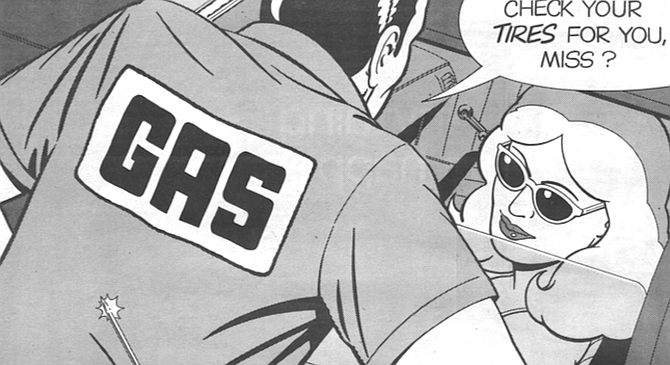
Drive in at midday. See the gas attendants, red rags dangling limply from their grease-stained back pockets, leaning against pumps, waiting. But after a Padres or Chargers game and during rush hour, they lift hoods, checking motorists’ oil, twisting off steaming radiator caps. Look around some more. A woman dressed in a beige suit and holding a briefcase has come to pick up her Datsun B210, and she’s looking at her bill, grinding her molars.
By Dan Rodgers, April 11, 1985 | Read full article
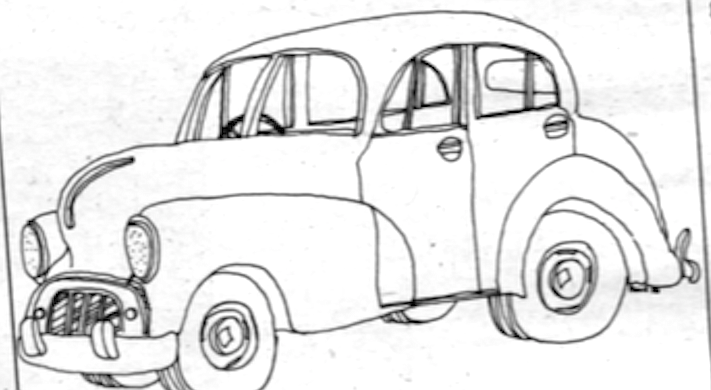
After a year of Morris Minor ownership, I knew most of the stationary Morrises in greater San Diego and North County — people keep them in their back yard for the day they are going to fix them up completely. The moving Morris Minors are no problem to find. Every time two pass each other, they honk, wave, or even pull to the side of the road to discuss hubcaps, convertible tops, or electric fuel pumps.
By Jacquelynne Garner, May 13, 1976 | Read full article
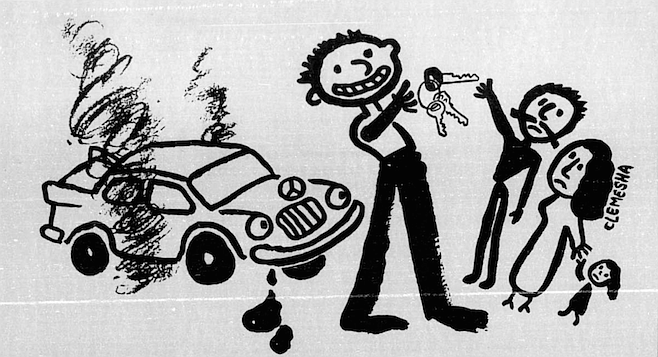
Big, burly man appears. He's an operating engineer, works at the dump, East County, has that pleasant dump look - blue shirt, greased-back hair, oil under his fingernails. Benz doesn't start, he jumps, we drive down to India Street then right and up the considerable hill on Washington. The car is stuck in first gear, engine winds, can feel the oil pressure squeeze-squeeze-squeeze, can feel the pressure on the bearings push-push-push, the hood vibrates viciously.
By Patrick Daugherty, Aug. 13, 1992 | Read full article
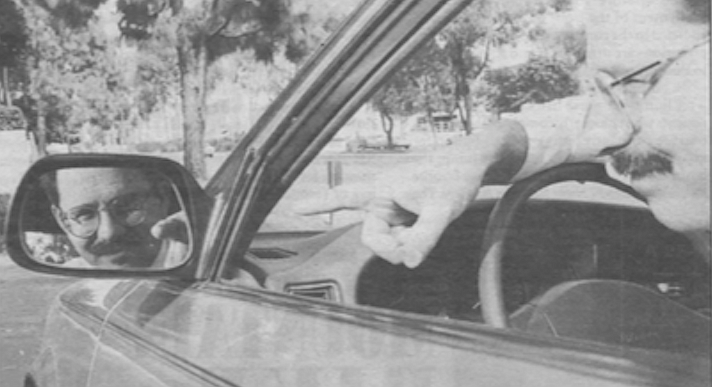
“When I got down to the University of Arizona, in order to make the payments, I had to hold down two jobs. I loaned the car to my roommate. I said, ‘Oh yeah, sure, you can borrow my car, you’re just going to drive around town, right?’ He goes to Guaymas, Mexico, and hits a cow head-on. Jesus, he crashed it. We fixed it up, but it was never the same as driving it off the showroom floor.”
By Patrick Daugherty, Sept. 9, 1994 | Read full article

“We’d have four or five of those races, then we’d all form up and drive up Midway, cross the causeway and over the bridges, up through Crown Point and back down through Mission Beach, cross the old bridge from Mission Beach to Ocean Beach, come back up West Point Loma Boulevard, and head back down the causeway. A couple of the guys would choose up, and off they’d go, racing each other down to Midway.”
By Jud Weaver, Sept. 29, 1994 | Read full article
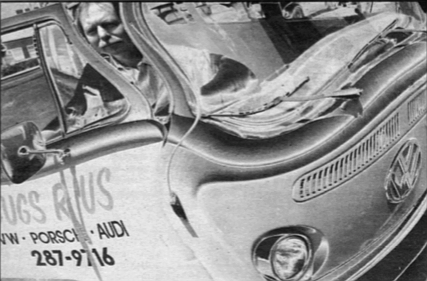
“I love the side doors. In a ’65 they swing open. I do carpentry work. The newer models have rolling doors, the suspension is a little better, but they have those doors. The amount of effort required to open and close a sliding door; there’s no comparison. I go in and out of the bus so much during the course of the day that my arms would be worn out with sliding doors.”
By Patrick Daugherty, Sept. 7, 1995 | Read full article
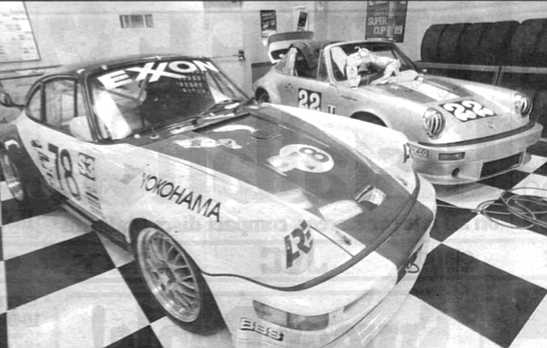
“There is no feeling better, other than maybe sex, than to take a curve at that speed, fast, and feel like you’re hanging onto the road. I don’t know how to communicate it other than that, because the only way you get it communicated is through your butt, being in the car and having the sensation of being solidly planted, and Porsche gives you the feeling of being solidly planted, no matter what speed you’re at."
By Matthew Lickona, Feb. 12, 1998 | Read full article
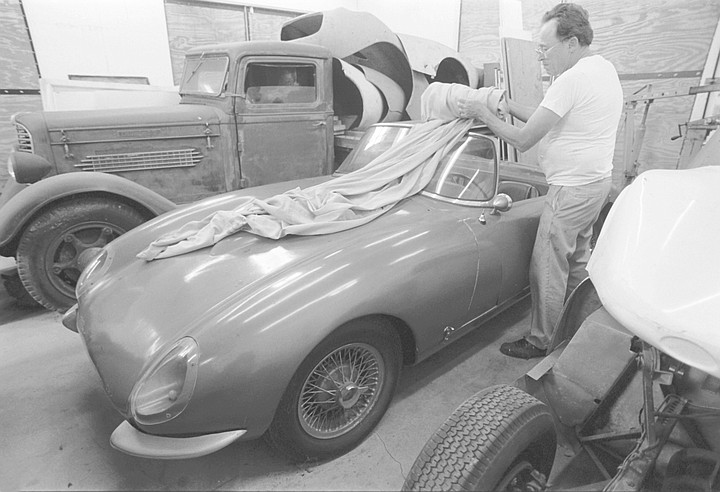
“Everybody at Gyrotor was sort of a car nut, and we were just sitting around talking, and somebody said, 'What America needs is a good cheap sports car. We’ve got the Corvette’ — the vice president had a Corvette, a big fat turkey — ‘and there’s this Austin-Healy Sprite. Why can’t America build an Austin-Healy Sprite?’ That’s what we started out doing, building a cheap, sporty road car that you could race, made for the masses, made in America.”
By Linda Nevin, Nov. 25, 1998 | Read full article
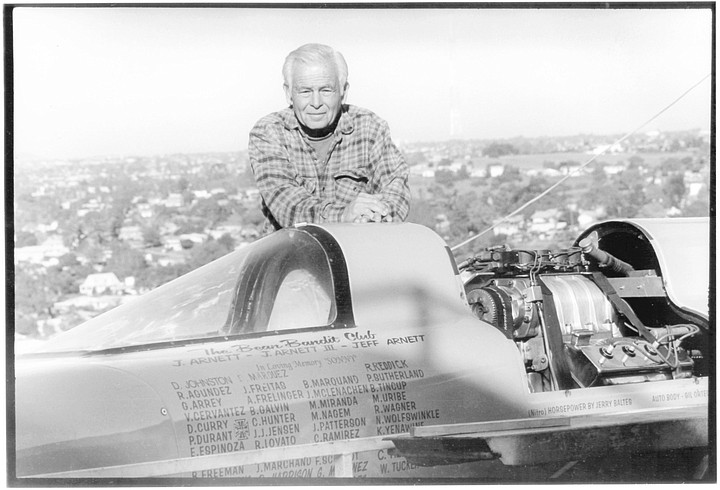
When World War II ended, Joaquin, Carlos, and their friends came back to the old neighborhood. The Road Ramblers and other local clubs had held timing races on Miramar Road before the war. But the highway patrol had put a stop to it, and local speed heads knew they needed a safe, sanctioned place for their meets. Paradise Mesa was an abandoned auxiliary Navy landing strip, a backup in case North Island was bombed.
By Linda Nevin, Jan. 14, 1999 | Read full article


Drive in at midday. See the gas attendants, red rags dangling limply from their grease-stained back pockets, leaning against pumps, waiting. But after a Padres or Chargers game and during rush hour, they lift hoods, checking motorists’ oil, twisting off steaming radiator caps. Look around some more. A woman dressed in a beige suit and holding a briefcase has come to pick up her Datsun B210, and she’s looking at her bill, grinding her molars.
By Dan Rodgers, April 11, 1985 | Read full article

After a year of Morris Minor ownership, I knew most of the stationary Morrises in greater San Diego and North County — people keep them in their back yard for the day they are going to fix them up completely. The moving Morris Minors are no problem to find. Every time two pass each other, they honk, wave, or even pull to the side of the road to discuss hubcaps, convertible tops, or electric fuel pumps.
By Jacquelynne Garner, May 13, 1976 | Read full article

Big, burly man appears. He's an operating engineer, works at the dump, East County, has that pleasant dump look - blue shirt, greased-back hair, oil under his fingernails. Benz doesn't start, he jumps, we drive down to India Street then right and up the considerable hill on Washington. The car is stuck in first gear, engine winds, can feel the oil pressure squeeze-squeeze-squeeze, can feel the pressure on the bearings push-push-push, the hood vibrates viciously.
By Patrick Daugherty, Aug. 13, 1992 | Read full article

“When I got down to the University of Arizona, in order to make the payments, I had to hold down two jobs. I loaned the car to my roommate. I said, ‘Oh yeah, sure, you can borrow my car, you’re just going to drive around town, right?’ He goes to Guaymas, Mexico, and hits a cow head-on. Jesus, he crashed it. We fixed it up, but it was never the same as driving it off the showroom floor.”
By Patrick Daugherty, Sept. 9, 1994 | Read full article

“We’d have four or five of those races, then we’d all form up and drive up Midway, cross the causeway and over the bridges, up through Crown Point and back down through Mission Beach, cross the old bridge from Mission Beach to Ocean Beach, come back up West Point Loma Boulevard, and head back down the causeway. A couple of the guys would choose up, and off they’d go, racing each other down to Midway.”
By Jud Weaver, Sept. 29, 1994 | Read full article

“I love the side doors. In a ’65 they swing open. I do carpentry work. The newer models have rolling doors, the suspension is a little better, but they have those doors. The amount of effort required to open and close a sliding door; there’s no comparison. I go in and out of the bus so much during the course of the day that my arms would be worn out with sliding doors.”
By Patrick Daugherty, Sept. 7, 1995 | Read full article

“There is no feeling better, other than maybe sex, than to take a curve at that speed, fast, and feel like you’re hanging onto the road. I don’t know how to communicate it other than that, because the only way you get it communicated is through your butt, being in the car and having the sensation of being solidly planted, and Porsche gives you the feeling of being solidly planted, no matter what speed you’re at."
By Matthew Lickona, Feb. 12, 1998 | Read full article

“Everybody at Gyrotor was sort of a car nut, and we were just sitting around talking, and somebody said, 'What America needs is a good cheap sports car. We’ve got the Corvette’ — the vice president had a Corvette, a big fat turkey — ‘and there’s this Austin-Healy Sprite. Why can’t America build an Austin-Healy Sprite?’ That’s what we started out doing, building a cheap, sporty road car that you could race, made for the masses, made in America.”
By Linda Nevin, Nov. 25, 1998 | Read full article

When World War II ended, Joaquin, Carlos, and their friends came back to the old neighborhood. The Road Ramblers and other local clubs had held timing races on Miramar Road before the war. But the highway patrol had put a stop to it, and local speed heads knew they needed a safe, sanctioned place for their meets. Paradise Mesa was an abandoned auxiliary Navy landing strip, a backup in case North Island was bombed.
By Linda Nevin, Jan. 14, 1999 | Read full article
Comments